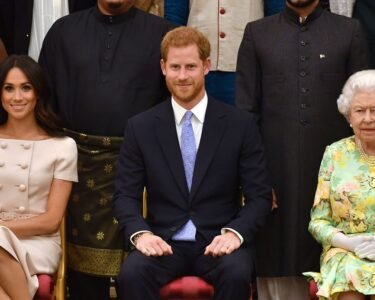Tropical fruits, phallic flowers, mushrooms and even blinged-out citruses are taking over wedding florals, replacing traditional roses and other more demure blooms.
Wedding vendors and event planners are seeing a major shift away from formal and conventional elements, and florals are no exception.
But then again this is New Orleans, where celebrations can be whimsical and even a little weird.
“People are leaning more into a nontraditional bridal look with asymmetry and looseness,” says Jessica DeFraites, director of creative design and development at Urban Earth Studios, which specializes in wedding, event and floral designs.
Many of her clients approach her with photos of arrangements they like, and often there’s not a rose or tulip in sight.
“They’re like, ‘Look at these fun, funky things,’” she says. “It’s kind of all over, but the unstructured look is just what locals are looking for,” she says. “And that’s been happening on a national level.”
She gets a lot of requests for anthuriums these days. “It’s a heart-shaped, very phallic flower,” she says with a laugh, adding. “It’s OK for things to be a little weird.”
Floral designers also are seeing requests for produce being incorporated into the decor.
“What we’re seeing already is a big influence of the use of fruits and vegetables,” DeFraites says. She’s lately been incorporating seasonal fruits that are bedazzled, painted or cut in half and styled into floral arrangements.
Jacqui Roche, co-owner of Cry Baby Floral, says the days of “roundy-moundy” bouquets and arrangements are all but gone, and like DeFraites, she says a more organic, less polished look is in right now.
Personal styles run the gamut, of course, and not everyone wants a cornucopia of produce.
Some couples are opting for more understated looks, like picking a single type of flower and highlighting it as a centerpiece of a bouquet or an installation.
Roche says she’s also seen an uptick in requests for anthuriums, but says calla lilies, different types of daisies and blooms that add texture are also popular right now. And peonies are still a common request.
Both say that bold colors are especially in right now.
“Pastels were in the past couple years,” Roche says. But now clients are looking for “primary colors and more saturated hues,” she says. She recently designed florals for a wedding that were a monochromatic, bold red color scheme for a Valentine’s Day wedding.
“You used to think of the bride in white, and blush and bashful as the majority of the color scheme,” says Urban Earth’s DeFraites. “Now we’re seeing bold tones even in the spring.”
Planning ahead
New Orleans lends itself to spontaneous celebrations, and DeFraites says it’s always been a hot spot for smaller weddings and elopements that call for less formal elements.
“I think that the boho chick look has always kind of been a vibe in New Orleans,” she says. “People run away and get married here … We’ve had microweddings for a long time. People are like, ‘Hey, let’s go for the weekend and get married.’”
Still, she cautions that details matter, and it’s important to plan ahead and come up with a budget – even if the overall look and feel of the wedding is eclectic.
There aren’t any firm rules around budgeting for florals, but DeFraites says to always think about the scale of the wedding, and especially the size of the venue.
For clients who are booking bigger venues and have a larger guest list, she recommends working with a florist about a year, or even more, in advance. And don’t be shocked by the price tag.
“If you are getting married at the New Orleans Museum of Art, we all know it’s a huge space,” she says. “Don’t come to a designer and say, ‘I only have a grand for flowers.’ If you’re spending a considerable amount on a large venue and catering but then you’re going to scrub down the decor, you’re not doing justice to the venue, yourself or the event.”
The scale of the wedding also determines the timeline for preparations, especially because most vendors require deposits throughout the planning process.
“If you know you’re having a 350-person wedding, don’t wait for six months beforehand and then be shocked by the cost,” says DeFrites. “If it’s a big wedding, you need to plan further in advance.”
For those who aren’t planning a blowout ceremony and reception, Roche of Cry Baby Floral says some of her clients are cutting costs overall by not having bridesmaids or groomsmen parties, and keeping the ceremonies more intimate.
That relieves them of having to provide bouquets for all the wedding VIPS. But it also opens up the opportunity to focus on creating show-stopping floral backdrops, centerpieces and installations that everyone can enjoy.
“We always advise people to think of ‘impact’ moments. You don’t necessarily need a bud vase on every surface. You can take a cascading cake table or an altar versus having little flowers everywhere,” she says.
A good floral backdrop also helps enhance photographs of moments that fly by quickly.
Roche says that installations can often be repurposed from the ceremony for the reception.
“People will have a ceremony that is only 20-30 minutes long,” Roche says. “But it’s usually the most photographed moment and the thing you think about the most (afterward). The backdrop is important.”




